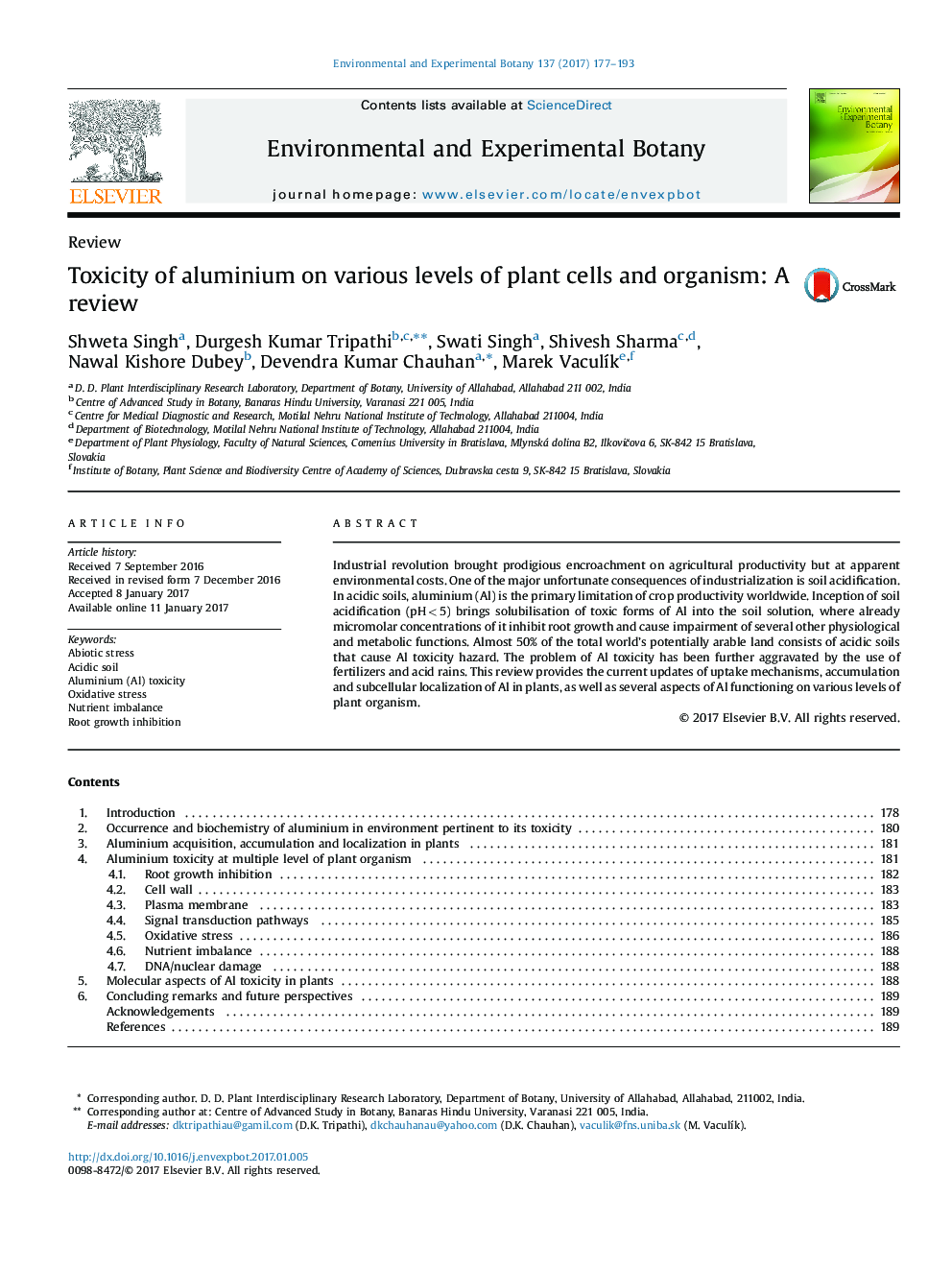| Article ID | Journal | Published Year | Pages | File Type |
|---|---|---|---|---|
| 5766631 | Environmental and Experimental Botany | 2017 | 17 Pages |
â¢Provide the contemporary information regarding the uptake, accumulation and subcellular localization.â¢Embodies the recent studies related to the biochemical and physiological functioning of Al, toxicity in higher plants.â¢Mechnanistic evaluation of Al toxicity and tolerance in higher plants.â¢A grave discussion of the current status and future prospects of aluminum research on plants.
Industrial revolution brought prodigious encroachment on agricultural productivity but at apparent environmental costs. One of the major unfortunate consequences of industrialization is soil acidification. In acidic soils, aluminium (Al) is the primary limitation of crop productivity worldwide. Inception of soil acidification (pHÂ <Â 5) brings solubilisation of toxic forms of Al into the soil solution, where already micromolar concentrations of it inhibit root growth and cause impairment of several other physiological and metabolic functions. Almost 50% of the total world's potentially arable land consists of acidic soils that cause Al toxicity hazard. The problem of Al toxicity has been further aggravated by the use of fertilizers and acid rains. This review provides the current updates of uptake mechanisms, accumulation and subcellular localization of Al in plants, as well as several aspects of Al functioning on various levels of plant organism.
Graphical abstractDownload high-res image (361KB)Download full-size image
